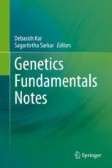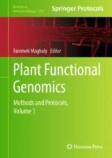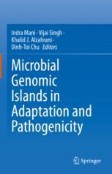Search
Search Results
-
Cytotrap: An Innovative Approach for Protein–Protein Interaction Studies for Cytoplasmic Proteins
Protein–protein interaction map** has gained immense importance in understanding protein functions in diverse biological pathways. There are...
-
Intramolecular charge transfer and the function of vibronic excitons in photosynthetic light harvesting
A widely discussed explanation for the prevalence of pairs or clusters of closely spaced electronic chromophores in photosynthetic light-harvesting...

-
Evaluation of Cyc1 protein stability in Acidithiobacillus ferrooxidans bacterium after E121D mutation by molecular dynamics simulation to improve electron transfer
Cyc 1 (Cytochrome c 552 ) is a protein in the electron transport chain of the Acidithiobacillus ferrooxidans ( Af ) bacteria which obtain their energy...
-
Protein networking: nicotinic acetylcholine receptors and their protein–protein-associations
Nicotinic acetylcholine receptors (nAChR) are complex transmembrane proteins involved in neurotransmission in the nervous system and at the...

-
Potato (Solanum tuberosum L.) non-specific lipid transfer protein StLTP6 promotes viral infection by inhibiting virus-induced RNA silencing
Main conclusionFor the first time it is reported that members of the nsLTP protein family could promote viral infection by inhibiting virus-induced...

-
Protein Translation
The genetic information stored in DNA as four bases is transcribed to messenger RNA. The messenger RNA moves out of the nucleus and the information...
-
Determining Protein Structures Using X-Ray Crystallography
X-ray crystallography is a robust and widely used technique that facilitates the three-dimensional structure determination of proteins at an atomic...
-
Challenges in Eventing Horizontal Gene Transfer
Horizontal gene transfer (HGT) takes place when two organisms share their genetic material. Contrary to the ancestral transfer of genes, viz....
-
Analysis of Protein Glycosylation in the ER
Protein N-glycosylation is an essential posttranslational modification which is initiated in the endoplasmic reticulum (ER). In plants, the N-glycans...
-
Chaperone proteins and peroxisomal protein import
Peroxisomes are ubiquitous organelles present in most eukaryotic cells. Their role in cellular metabolism is diverse among species. An array of genes...
-
Detection of Protein–Protein Interactions Using Glutathione-S-Transferase (GST) Pull-Down Assay Technique
Pull-down assay is a technique to analyze direct protein–protein interaction under in vitro condition. Also, this technique is appropriate for...
-
Transplanted human photoreceptors transfer cytoplasmic material but not to the recipient mouse retina
BackgroundThe discovery of material transfer between transplanted and host mouse photoreceptors has expanded the possibilities for utilizing...

-
APEX2-Mediated Proximity Protein Labeling in Dictyostelium
Largely due to its simplicity, while being more like human cells compared to other experimental models, Dictyostelium continues to be of great use to...
-
Screening of Protein–Protein Interaction Modulators Using BRET-Based Technology
Protein–protein interactions (PPIs) play central roles in most molecular mechanisms underlying cellular and biological processes. Within the methods...
-
Elevated cholesteryl ester transfer and phospholipid transfer proteins aggravated psoriasis in imiquimod-induced mouse models
BackgroundPsoriasis is a chronic inflammatory skin disorder related to dyslipidemia, with decreased high-density lipoprotein (HDL). Various cell...

-
Next-Generation Yeast Two-Hybrid Screening to Discover Protein–Protein Interactions
Yeast two-hybrid is a powerful approach to discover new protein–protein interactions. Traditional methods involve screening a target protein against...
-
Homo-FRET Imaging to Study Protein–Protein Interaction and Complex Formation in Plants
Protein–protein interactions in living plant cells can be measured by changes in fluorescence anisotropy due to homo-FRET (Förster Resonance Energy...
-
Identification of Protein Partners by APEX2 Proximity Labeling
Proximity labeling methods enable the identification of proteins in the vicinity of a protein of interest in living cells. Among them, APEX2...
-
Discovering Protein–Protein Interactions using Co-Fractionation-Mass Spectrometry with Label-Free Quantitation
Proteins generally achieve their functions through interactions with other proteins, so being able to determine which proteins interact with which...
-
Assessing Peroxisomal Protein Interaction by Immunoprecipitation
Organelles physically interact with each other via protein tethering complexes that bridge the opposing membranes. Organelle membrane contacts are...
